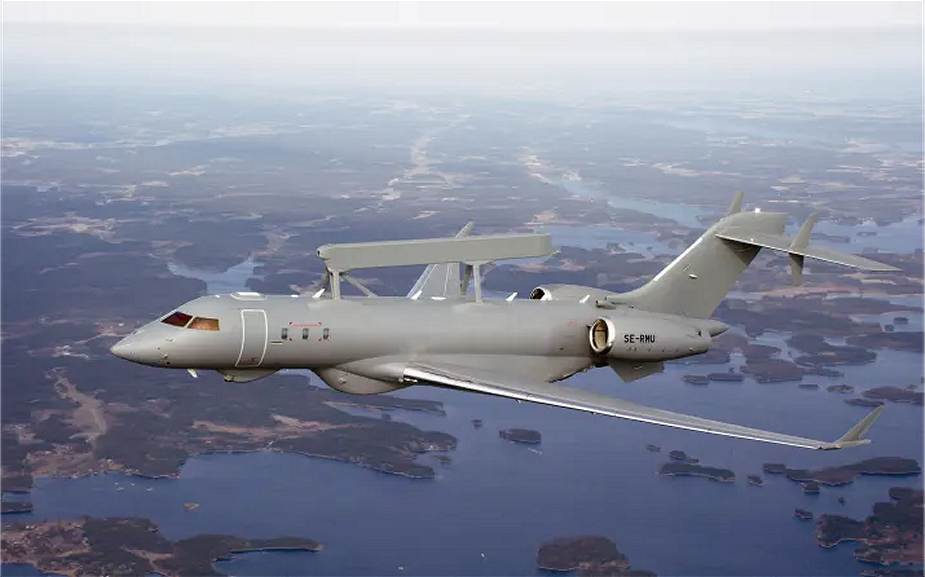According to a press release published by SAAB on September 30, 2020, Saab delivers the second GlobalEye Swing Role surveillance aircraft to the United Arab Emirates on 30 September 2020.
Follow Air Recognition on Google News at this link
 SAAB GlobalEye Swing Role Surveillance aircraft. (Picture source SAAB)
SAAB GlobalEye Swing Role Surveillance aircraft. (Picture source SAAB)
This follows Saab’s delivery of the first GlobalEye aircraft in April 2020 to the United Arab Emirates, which has ordered three GlobalEye aircraft. The initial contract was signed in late 2015.
“Completing the second GlobalEye delivery in five months is a testament to Saab’s in-house expertise as an aircraft manufacturer, sensor provider, and large system integrator. I am proud to contribute to the United Arab Emirates’ airborne surveillance capability with GlobalEye, which is the most advanced solution of its kind”, says Micael Johansson, President, and CEO of Saab.
In November 2015 during the Dubai Air Show, the Swedish Company SAAN has signed a contract with the United Arab Emirates (UAE) for the production of two GlobalEye systems, which was followed in 2017, for a third aircraft. In November 2019 UAE also announced its intention to complete a contract amendment for the purchase of an additional two aircraft.
GlobalEye is a multi-role airborne early warning & control (AEW&C) aircraft manufactured by the Swedish defense and security company Saab. GlobalEye consists of a suite of sensors using Saab's Erieye ER (Extended Range) radar and mission system, installed in the Bombardier Global 6000 long-range business jet. With its mix of modern active and passive sensors, it provides long-range detection and identification of objects in the air, at sea, and over land.
GlobalEye is equipped with an advanced self-protection system based on the latest technology developed by Saab. The self-protection system integrates a suite of sensors and countermeasures dispensers. The autonomously operated system can also be controlled by the pilot.
















